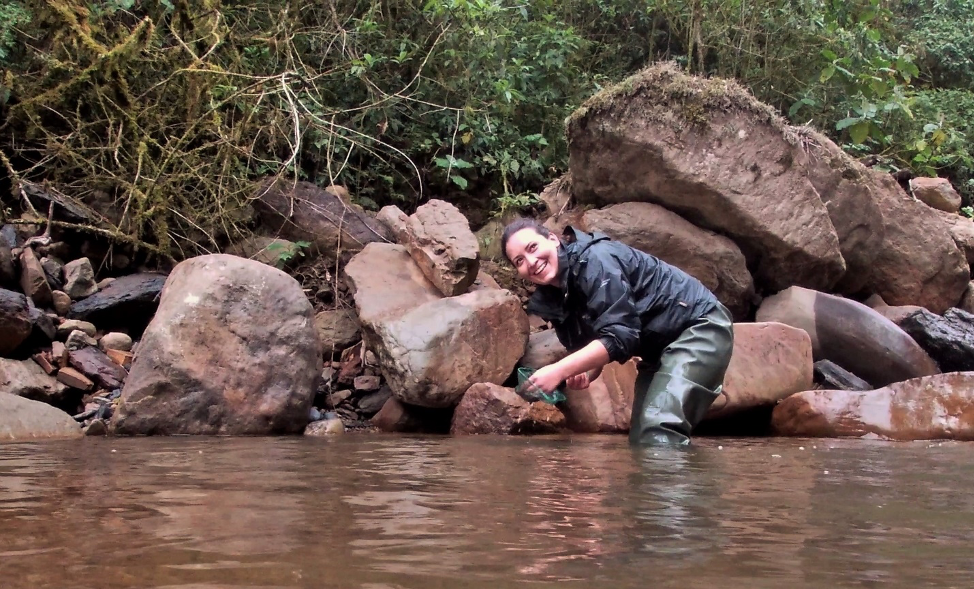Teresa Camacho Badani is one of the ASA’s Future Leaders of Amphibian Conservation. As part of the programme, ASA awarded her a grant to attend the 9th World Congress of Herpetology in Dunedin, New Zealand, where she gave a talk about her work at the Amphibian Conservation Research Symposium, organised by the ASA.
To learn more about Teresa and other Future Leaders, visit our webpage.
Can you tell us a little bit about yourself, Teresa?
I am a Bolivian herpetologist, and I have been working with amphibians since I was a student at the university. This is something that really fascinates me. One of my favorite places is the cloud forest, where we can see unique species in the world. Currently, I’m working at the Alcide d´Orbigny Natural History Museum in Cochabamba, Bolivia, where I lead a wonderful team dedicated to the conservation and the care of threatened amphibians in the country.
What projects have you been involved in to promote amphibian conservation?
We are currently working on the Action Plan for the Sehuencas Water Frog (Telmatobius yuracare) and the Titicaca Water Frog (Telmatobius culeus). In our captive breeding program called K’ayra (word which in the native Quechua and Aymara languages means “frog”) we have a population of about 700 frogs, comprising 5 endangered species of the Telmatobius genus, the Chape Toad (Rhinella justinianoi), and the Bolivian Cochran Frog (Nymphargus bejaranoi), a glass frog that has only recently been rediscoverd in Bolivia after 18 years.
What is your favourite amphibian species and why?
This is a tough question! Choosing just one is almost impossible, since they all have something special. Most people would expect me to say that my favourite is Romeo, the Sehuencas Water Frog… this species is undoubtedly on the top of my list. But if I had to chose a species that I would like to see in the field, it would be another Water Frog (Telmatobius edaphonastes). It is an endemic species of the Bolivian cloud forests that has not been seen for more than 20 years now. I would love to find it and would be extremely happy to report the rediscovery of this species!
Has been recognized as a Future Leader of Amphibian Conservation by ASA made a difference in your career so far?
It has not been too long since I had the honor to be recognised as Future Leader by the Amphibian Survival Alliance. But since then and after attending the Amphibian Conservation Research Symposium at the World Congress of Herpetology in New Zealand, I have already seen positive changes. At the Congress I had the opportunity to network with several scientists, and many of them are interested in the work that we are doing in Bolivia. We have even planned some activities and agreed to write scientific papers together. Here in Bolivia, there was a great coverage by the press about my award. It was very important to widely publicize amphibian conservation in the media. Now people know more about my work and are interested in the wonderful species of amphibians that we have in Bolivia!

